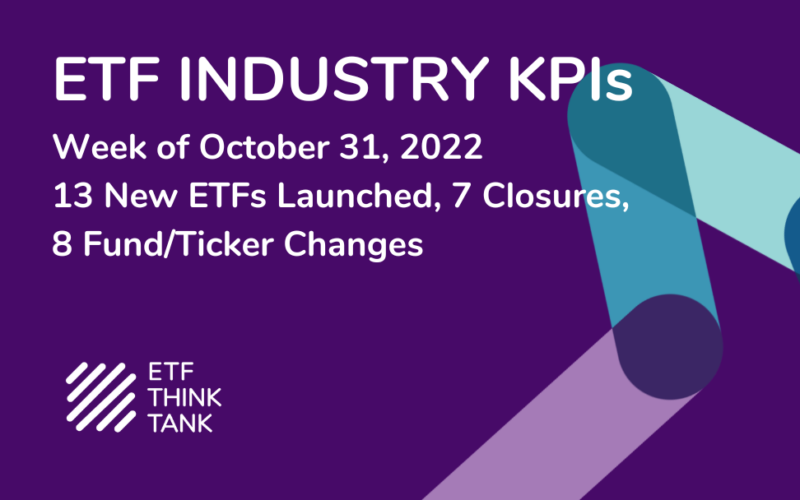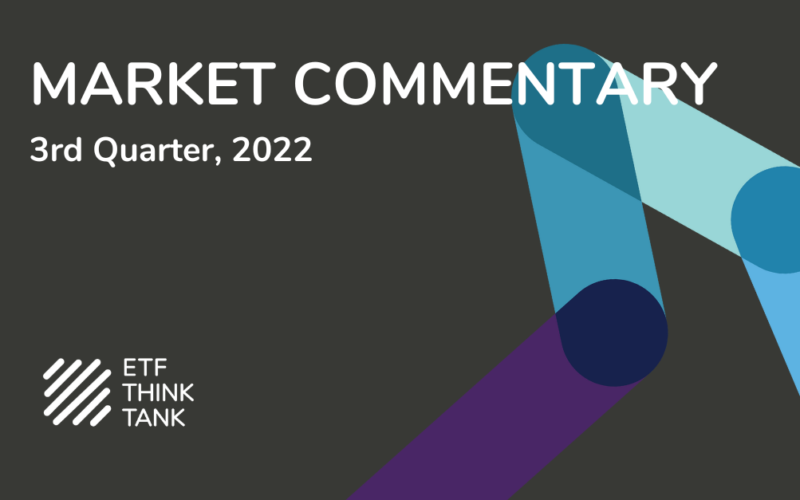Lee Shaiman is the Executive Director of the Loan Syndications & Trading Association, an organization whose aim is to promote a fair, orderly, efficient, and growing corporate loan market. It is a market that many investors may not be familiar with or how it works. He joins the ETF Think Tank to talk about the syndicated loan market and some of the themes that are impacting it at the moment.
Syndicated loans are typically those that help finance leveraged financial corporations. The total bank loan market is around $1.4 trillion with the majority of them getting syndicated to big institutional investors. In that case, banks act as the middleman – they collect interest payments on the loans and distribute them to holders. It’s important to remember that these are not securities, they are loans. When someone owns one of these loans, they are effectively becoming a lender.
In terms of structure, most of these loans have maturities between 5 and 7 years. There is no real duration risk with them because the rates reset every 30-90 days. Credit spread risk is the biggest risk because these are mostly leveraged companies with low credit quality. The core of the leveraged loan market has a rating of single-B, so this is not insignificant. Right now, there’s minimal amortization of these loans in the first few years, but in falling interest rate environments, many get repaid or prepaid quickly.
The bank loan market is facing some significant challenges. One of the biggest issues is liquidity. There needs to be ample liquidity available in case of a large drawdown, such as the one that occurred during the financial crisis. Currently, this asset class has never missed a redemption, so it has historically worked very well, but the current environment continues to raise concerns about ongoing liquidity issues.
Another is the regulatory environment whose issues may or may not get resolved. The SEC proposed new regulations on mutual fund and ETF settlements, which could present an existential threat to the market. It may become very difficult to hold bank loans within a fund format and meet the daily liquid requirement the SEC is proposing. Shaiman says that it is going to be a very tough road.
Shaiman believes that active management within a bank loan portfolio is the way to go. In general, you need to manage credit risk instead of following an index because plain beta includes too much junk that can be avoided. Issues that are over-levered or positioned poorly can be filtered out. ETF transparency is helpful in this regard, but you also want to understand what the managers are doing and what they’re buying.
Other key takeaways:
- Senior loans come in at the top of the liquidation priority order. They’re usually secured by most/all corporate assets including IP. They do not usually have insurance guarantees because there is too much risk exposure to the insurance companies.
- The ETF wrapper has made some issues less complicated. You have the ability to redeem and issue in the market. Bank loans cannot create or redeem, so ETFs helped allow that. ETFs and mutual funds investing in bank loans have been able to consistently make redemptions.
- Why is there not more energy exposure here? In bank loans, there was a downshift in energy. In 2017, there was a big flush out and the fracking industry got crushed on commodity price moves. Volatility is high and it will take time to rebuild confidence.
- In the event of a default within a bank loan fund or ETF, the fund usually bears the cost.
- As a prior fund manager, what would Shaiman do differently with a new fund? He says he’d be more model-focused in optimizing the portfolio. He would also spend more time helping people understand the products.
You can watch a replay of this virtual happy hour on our YouTube channel here. While there, subscribe to our channel to stay up to date on our latest content.
Disclosure
All investments involve risk, including possible loss of principal.
The material provided here is for informational purposes only and should not be considered an individualized recommendation or personalized investment advice. The investment strategies mentioned here may not be suitable for everyone. Each investor needs to review an investment strategy for his or her own particular situation before making any investment decision.
All expressions of opinion are subject to change without notice in reaction to shifting market conditions. Data contained herein from third party providers is obtained from what are considered reliable sources. However, its accuracy, completeness or reliability cannot be guaranteed.
Examples provided are for illustrative purposes only and not intended to be reflective of results you can expect to achieve.
The value of investments and the income from them can go down as well as up and investors may not get back the amounts originally invested, and can be affected by changes in interest rates, in exchange rates, general market conditions, political, social and economic developments and other variable factors. Investment involves risks including but not limited to, possible delays in payments and loss of income or capital. Neither Toroso nor any of its affiliates guarantees any rate of return or the return of capital invested. This commentary material is available for informational purposes only and nothing herein constitutes an offer to sell or a solicitation of an offer to buy any security and nothing herein should be construed as such. All investment strategies and investments involve risk of loss, including the possible loss of all amounts invested, and nothing herein should be construed as a guarantee of any specific outcome or profit. While we have gathered the information presented herein from sources that we believe to be reliable, we cannot guarantee the accuracy or completeness of the information presented and the information presented should not be relied upon as such. Any opinions expressed herein are our opinions and are current only as of the date of distribution, and are subject to change without notice. We disclaim any obligation to provide revised opinions in the event of changed circumstances.
The information in this material is confidential and proprietary and may not be used other than by the intended user. Neither Toroso or its affiliates or any of their officers or employees of Toroso accepts any liability whatsoever for any loss arising from any use of this material or its contents. This material may not be reproduced, distributed or published without prior written permission from Toroso. Distribution of this material may be restricted in certain jurisdictions. Any persons coming into possession of this material should seek advice for details of and observe such restrictions (if any).











